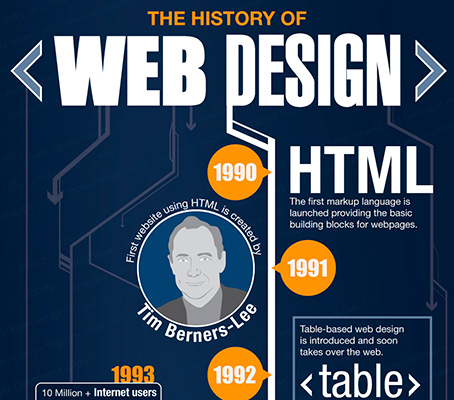The Improvement Of Online Platforms: A Journey Through Time
The Improvement Of Online Platforms: A Journey Through Time
Blog Article
Write-Up Author-Lamb Harding
In the past, internet sites were simple and focused on information. Navigating was direct, and layout was for desktop computers. Currently, user experience is essential. Data overviews styles for very easy navigating. Receptive layouts match different devices. Today, dark setting minimizes pressure, and minimalist menus improve navigation. Interactive attributes engage individuals, and strong visuals stick out. AI assimilation improves involvement. See exactly how style has progressed to enhance your online trip.
Early Days of Website Design
In the very early days of website design, simpleness reigned supreme. https://content-marketing-platfor73951.blog2freedom.com/29880853/study-the-art-of-crafting-attention-grabbing-ad-copy-with-impactful-headings-and-persuasive-ctas-to-drive-pay-per-click-success were standard, with minimal colors, typefaces, and formats. The focus got on offering information rather than showy visuals. Customers accessed the net via slow-moving dial-up connections, so rate and functionality were key.
Navigation food selections were straightforward, typically located on top or side of the web page. Internet sites were designed for desktop, as mobile browsing had not been yet prevalent. Content was king, and developers focused on easy readability over complicated design components.
HTML was the key coding language made use of, and developers had to work within its constraints. Computer animations and interactive features were minimal contrasted to today's requirements. Web sites were fixed, with little dynamic material or individualized user experiences.
Increase of User-Focused Style
With the development of site layout, a shift in the direction of user-focused design concepts has actually become significantly famous. Today, creating web sites that prioritize individual experience is critical for involving visitors and attaining service goals. User-focused style involves understanding the demands, choices, and actions of your target audience to customize the website's layout, material, and features appropriately.
Designers now conduct detailed study, such as customer surveys and functionality screening, to gather insights and comments straight from users. This data-driven technique aids in creating intuitive navigating, clear calls-to-action, and visually attractive user interfaces that resonate with visitors. By positioning the individual at the center of the design process, sites can supply an extra personalized and satisfying experience.
Responsive style has additionally become a key facet of user-focused design, ensuring that internet sites are maximized for different gadgets and display dimensions. This adaptability boosts access and functionality, accommodating the varied ways individuals interact with websites today. Fundamentally, the surge of user-focused design signifies a change in the direction of producing electronic experiences that focus on the demands and assumptions of the end customer.
Modern Trends in Web Design
Discover the latest fads shaping web design today. One popular pattern is dark mode style, supplying a streamlined and modern-day look while decreasing eye pressure in low-light atmospheres. An additional essential pattern is minimalist navigating, streamlining menus and enhancing user experience by focusing on essential elements. Incorporating micro-interactions, such as computer animated switches or scrolling effects, can create a much more engaging and interactive web site. Receptive style continues to be crucial, ensuring seamless customer experiences across numerous gadgets. Furthermore, utilizing vibrant typography and asymmetrical designs can add visual rate of interest and draw attention to particular content.
Incorporating AI technology, like chatbots for consumer support or individualized referrals, enhances user engagement and enhances processes. Accessibility has likewise come to be a considerable trend, with designers prioritizing comprehensive design methods to cater to diverse individual demands. simply click the up coming post by optimizing web site efficiency for speed and efficiency is an additional emerging trend in web design. Collaborating with user comments and data analytics to iterate and boost style constantly is important for staying appropriate in the ever-evolving digital landscape. By embracing these contemporary trends, you can develop a visually enticing, easy to use web site that resonates with your target market.
Final thought
As you reflect on the evolution of internet site layout from the early days to now, you can see just how user-focused style has actually ended up being the driving pressure behind modern trends.
Welcome the trip of modification and adjustment in web design, always maintaining the customer experience at the leading edge.
Remain existing with the most up to date trends and technologies, and never ever quit progressing your technique to produce aesthetically sensational and user-friendly sites.
https://www.searchenginejournal.com/grow-marketing-agency-report-callrail/441673/ , adjust, and produce - the future of web design is in your hands.
